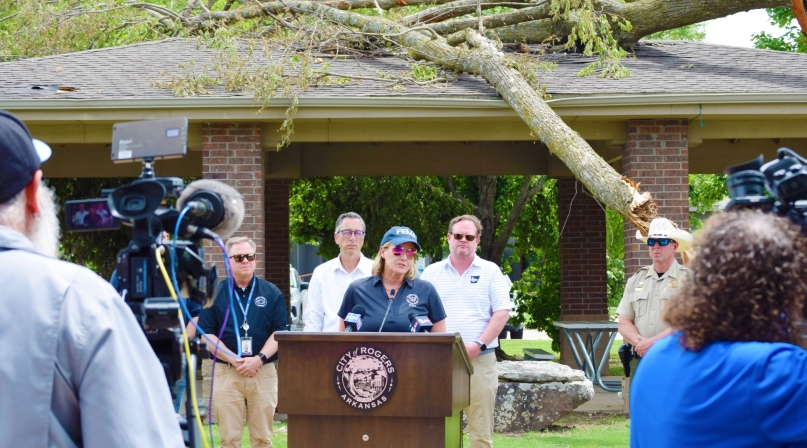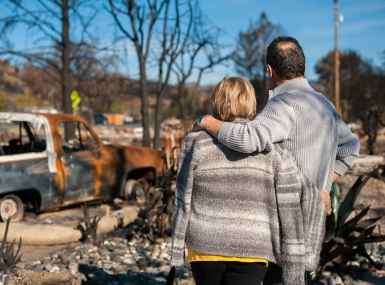Counties grapple with aftermath of deadly tornadoes

Key Takeaways
The tornado season has proved to be extremely active this year and the latest round of storms over the Memorial Day weekend has counties cleaning up after tornadoes and high winds ripped through Alabama, Arkansas, Kentucky, North Carolina, Oklahoma, Texas and Virginia, killing at least 26 people, according to several news reports.
There have been more than 1,000 unofficial tornado reports so far in 2024, about 300 above average for the year, according to the National Weather Service. The average number of tornadoes for this time of year is 749.
The weather service confirmed seven tornadoes hit northwestern Arkansas May 26 including Benton County, Ark., which suffered at least four deaths from the storm and saw the roof of the county courthouse peel away.
“We don’t know exactly what hit us yet,” Benton County Judge Barry Moehring said just after the storm, during a press conference.
Also in Arkansas, Baxter, Boone and Marion counties were hit by EF-3 tornadoes, which can pack up to 165-MPH winds. Each county suffered at least one fatality.
“I’ve been with the county for over 30 years and it’s probably the worst tornado I’ve seen,” Boone County Judge Robert Hathaway told Ozarksfirst.com.
In Baxter County, tourist Brad Nelson and his family rode out the storm in the county courthouse, KSPR-TV reported.
When they returned to their campground, their camper had moved about two feet, but their boat was spared. In Marion County, the weather service said the tornado measured a mile wide, packing 145-MPH winds.
Texas confirmed seven deaths after an EF-3 tornado hit the area; it was the deadliest area to hit Cooke County since 2015. Gov. Greg Abbott added Collin, Denton, Cooke and Montague counties to the state’s existing disaster declarations, which numbered 106 as of May 26, after a string of storms hit the state in recent weeks.
In Kentucky, residents of Hopkins County, were reliving a disaster. The area was hit in 2021 by an EF-4 tornado that killed 74 people. Over this Memorial Day weekend, the region was once again the scene of a tornado, this time an EF-3, that killed one person in the county.
Nick Bailey, director of Hopkins County emergency management agency, aired a live podcast Tuesday on Facebook to get out critical information to residents including information on water services, back-up generators, power restoration and transmission lines.
“First responders worked into the wee hours doing rescues and door-to-door checks,” he said. His office also posted debris removal guidelines and coordinated donations with volunteer teams.
Other hard-hit Kentucky counties were Caldwell, Hardin and Mercer counties, which each suffered a fatality. A fifth fatality took place in Louisville.
Mayes County Emergency Management in Oklahoma, located east of Tulsa, also reported two deaths from tornadoes over the Memorial Day weekend.
Counties in the surrounding area reported damage to homes and power outages. Delaware County, Okla. crews cleared roads so power trucks could get through to restore power.
Related News

House Transportation and Infrastructure Committee advances, House passes key bill with NACo’s support
On September 18, the U.S. House of Representatives Committee on Transportation and Infrastructure held a full committee markup session, voting to advance 29 measures for House floor consideration.
County News
‘Naturally Resilient Communities’ shows value of working with nature to reduce flood risk



